Deyrul-Zafaran Monastery, which dazzles with its magnificent architecture, is one of the most important centers of the Assyrian Church. This monastery, which was the residence of Syriac Orthodox patriarchs for 640 years until 1932, is the most visited monastery since it is close to Mardin. The monastery is one of the most important monasteries in Tur Abdin.
Besides being the center of the patriarchate, the monastery was the place of education for priests, monks, and diakos. Moreover, since the existence of the Assyrians, the tombs of 52 metropolitan and patriarchs have been buried in specially constructed rooms (tombs) in the monastery.
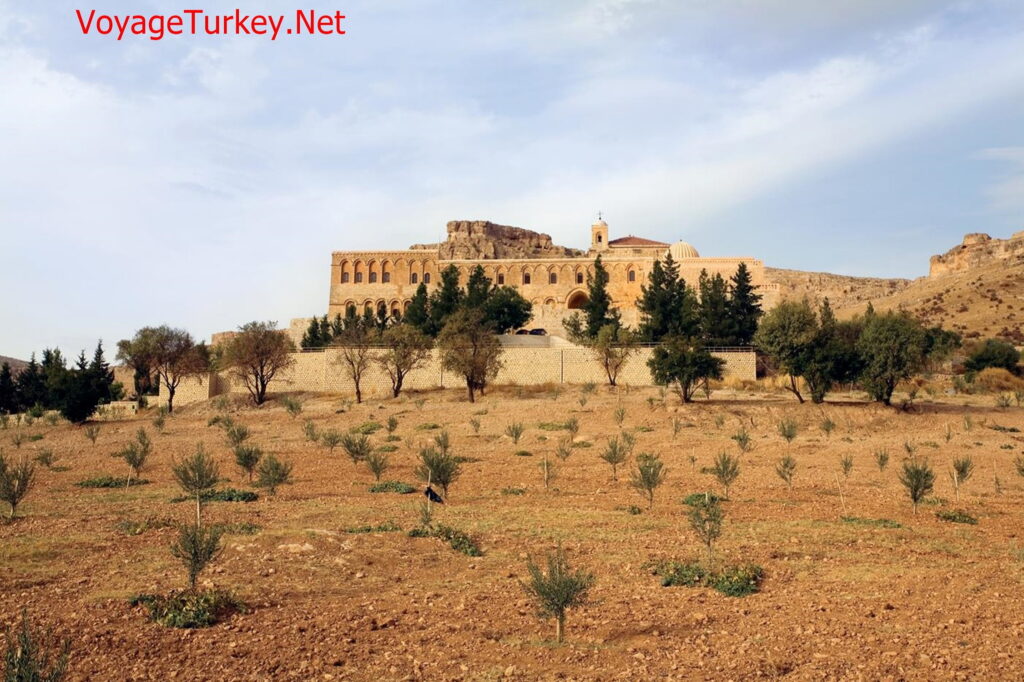
The monastery was used as the homeland of Syriac orphans and poor children and devotees.
This monastery was first named as Mor (Saint) Şeymun Monastery. The monastery was named as Mor (Saint) Hananyo or Mor (Saint) Evgin Monastery.
The monastery has been called Deyrul-Zafaran since the 19th century. This name is given to the structure due to the saffron flower. According to legend, the saffron plant was used in the mortar of the building and the structure took its yellow color from this plant. According to another rumor, because saffron is very common around the monastery is called with this name. The word Deyr in Arabic means monastery, so Deyrul-Zafaran can be translated into Turkish as Safran Monastery.
Location of the Deyrul-Zafaran (Dayro d-Mor Hananyo) Monastery
The monastery is situated on a high hill overlooking the Mardin Plain, 5 km east of the Mardin city center.
History of the Deyrul-Zafaran (Dayro d-Mor Hananyo) Monastery
The date of the first construction of the monastery is not known. Syrian sources say that the Deyrul-Zafaran monastery was first used as a temple of the Sun and then as a Roman fortress before Christ. According to the Assyrians, Mor (Aziz) Şleymun turned this building into a monastery in 400 and brought the bones of some saints here. For this reason, the monastery was first named as Mor (Saint) Şeymun Monastery.
The monastery, whose name began to be heard in the 5th century BC, lived its golden age in IX and X centuries after many demolitions and repairs. During this period, many famous names have grown here.

In 1056, the Syriac patriarchal center moved from Diyarbakır to this monastery and remained there until 1091. The Patriarchate moved to another city for a period and was brought back here in 1293 and stayed there from 1293 until 1932.
Continuous additions were made to the monastery during this period. The monastery is still undergoing renovations and arrangements.
Structure of the Deyrul-Zafaran (Dayro d-Mor Hananyo) Monastery
The Deyrul-Zafaran Monastery is a large complex of buildings dating to various periods.
The monastery is divided into two parts, old and new. There are four iwans around, two large and old cisterns in the middle.
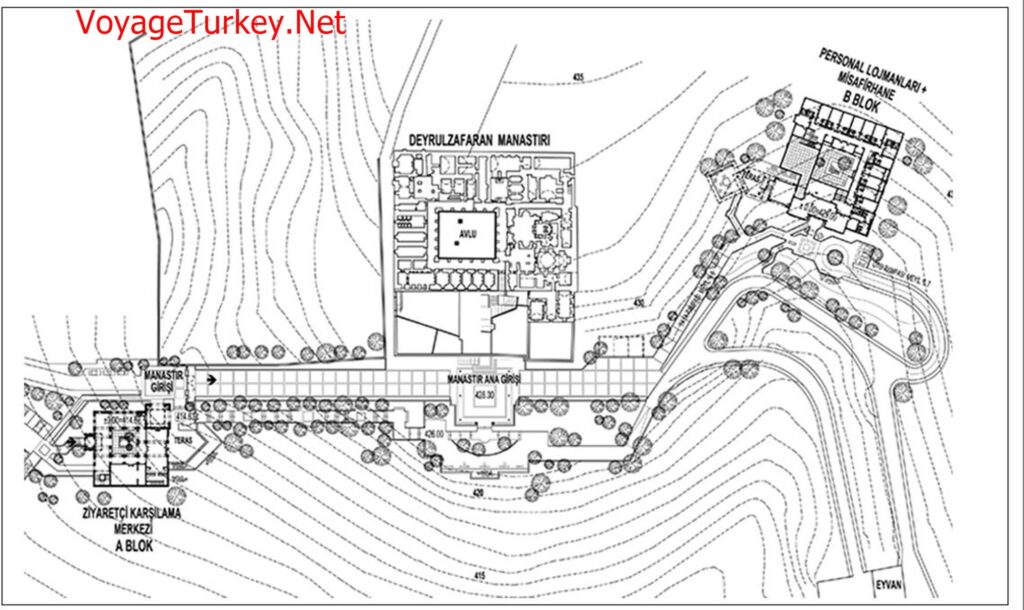
The eastern and western parts of the monastery are two-storey. The southern part has three floors and is relatively more beautiful.
Sun Temple
The oldest place of the monastery is the large hall under the courtyard. According to the inhabitants of the monastery, this place was built by the sun worshipers before Jesus. It was a common tradition in Syriacs, one of the first communities to accept Christianity, to build churches or monasteries on pagan temples.
The Temple of the Sun is located in the eastern corner of the Mor (Saint) Hananyo Church and consists of two parts. Although the exact date of establishment of this structure is not known, it is estimated that it dates back to the period until the establishment of Mardin. The building was used as the Sun Temple at that time.

The structure consists of two parts. The entrance is 25 square meters. The second part is 51.5 square meters wide and has a remarkable ceiling. The flat and coarse stones that form the ceiling are geometric and placed against each other without the use of mortar, sand, lime and similar materials.
Although the purpose of the two sections on the east and south sides of the temple is not known, it is presumed to be an altar site.
House of Saints (Beth Kadise)
Located on the southeastern side of the Mor (Saint) Hananyo Church, there are the bones of some saints as well as the graves of some patriarchs and metropolitans in the Monastery.

The domed building has a height of 10.5 and a width of 5.4 meters. It is estimated that this building was built in the 5th century when the monastery was founded.

In this building, which draws attention to the stone motifs found in the interiors, 4 of the 7 niches belong to the metropolitans and 3 of them belong to the patriarchal tombs.
Churches in the Deyrul-Zafaran (Dayro d-Mor Hananyo) Monastery
There are three churches built in different periods within the monastery; Mor Hananyno Church (493-518), Virgin Mary Church (1686-1708) and Mor Petrus Church (1696-1699).
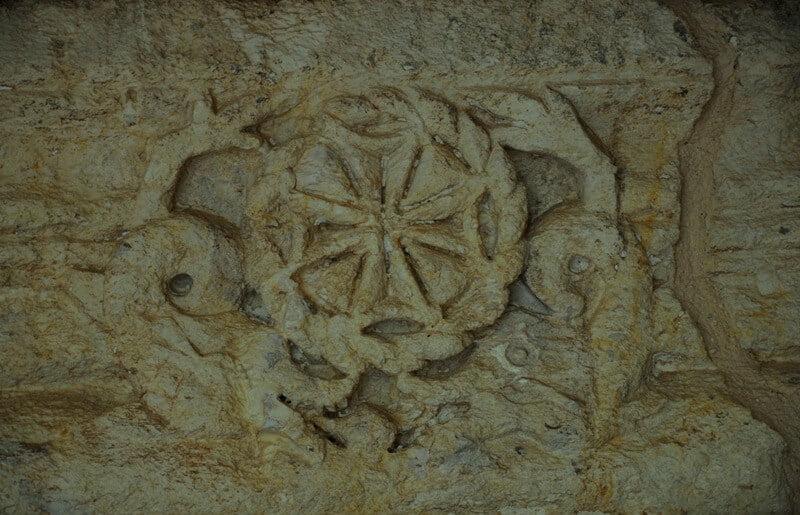
Mor (Saint) Hananyo Chırch (Domed Church)
This Church was built between 491-518 AD during the reign of Byzantine Emperor Anastasius. The church, built by Syrian architects Theodosius and Theodore, has a width of 12.3 meters and a height of 17.7 meters. The area of the church is 271 square meters.
This church is also called the Domed Church because it has a cross-shaped dome.
The pictures showing the various animal figures on the upper part of the exterior of the church are striking. Only one of the many frescoes on the inner walls of the church has survived. The only fresco that survived is depicted Aziz Hananyo, who had a major restoration in the monastery in 793.
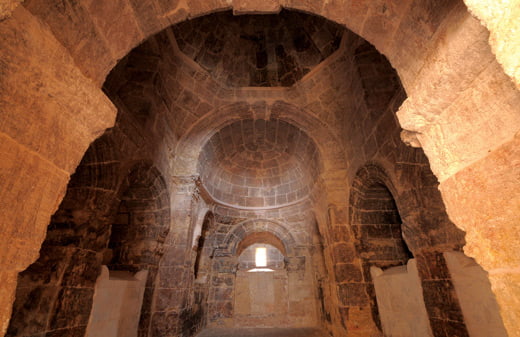
In the main apse of the church, there are two prominent lectures. It is estimated that the rostrum made of the walnut tree, located to the north of the church, is 350 years old. This lectern is used by the patriarchs. In the southern part of the church, the rostrum made of ivory belongs to the metropolitans. It is estimated that this lectern is 500 years old. The door on the west side of the church, made of walnut wood, is 500 years old.
Virgin Mary Church
The Church of the Virgin Mary, located northeast of the main courtyard, is considered the first church of the monastery. During the reign of Patriarch Cercis II (1686-1708), part of the Church was restored. It has an area of 153 square meters. Byzantine mosaics are found in the apse.

The ceilings and walls of the church are made of baked brick in Byzantine style.
How to get to Deyrul-Zafaran Monastery
Deyrulzafaran Monastery is located on the route of Mardin to Nusaybin. To go to Deyrulzafaran Monastery, you must first come to Mardin city center. There is no minibus or public transport from Mardin to Deyrulzafaran Monastery. Therefore, you need to go with your private car, taxi or rental car. The monastery is located in the central neighborhood of Mardin Alıms Almali neighborhood, a 15-minute taxi ride away. You can also rent a car to the monastery, which also has a large car park.

Visiting Hours of Deyrul-Zafaran Monastery
It is possible to visit Deyrulzafarân Monastery every day of the week. You can visit the monastery between 09.00-11.30 and 14.00-17.30 in summer and 08.00-13.30 and 13.30-16.00 in winter.
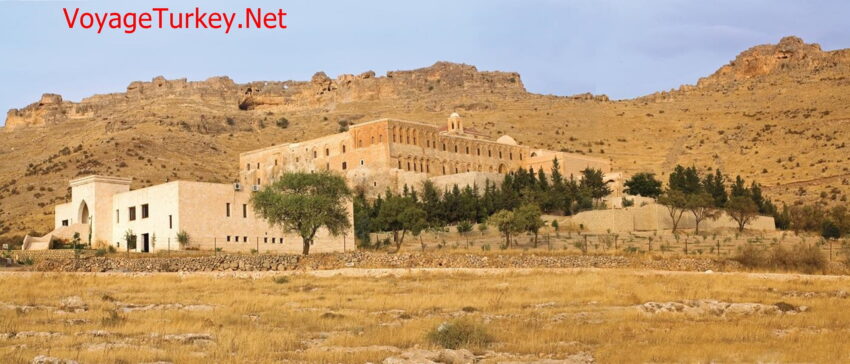
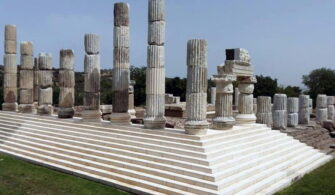
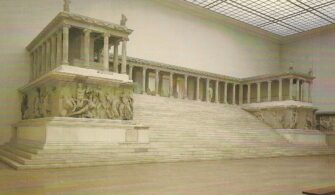
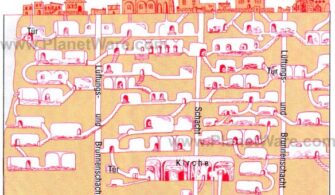
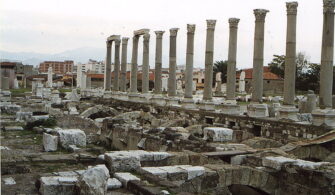
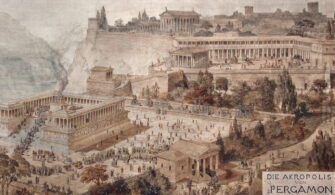
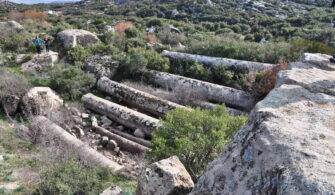
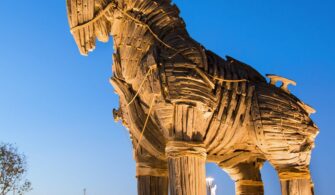
Please l am souriny from usa. I need to visit mardin..and have no contact info..Please help.